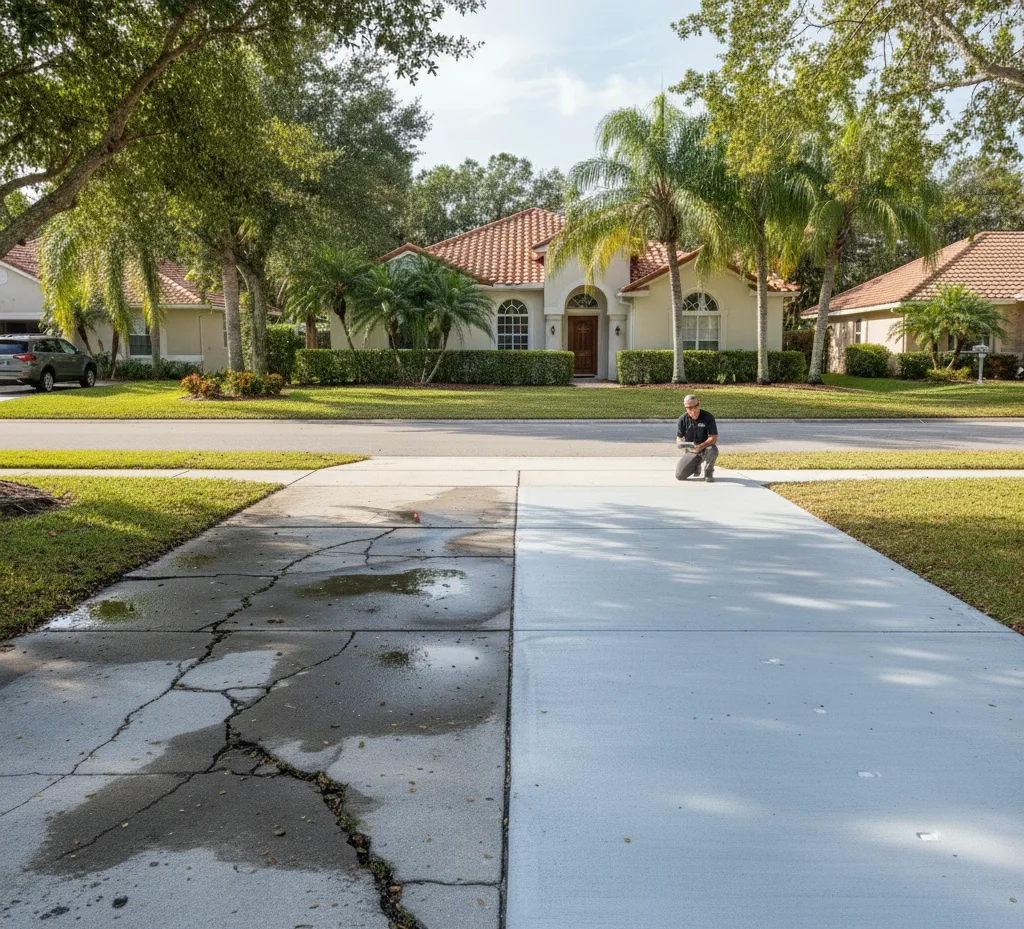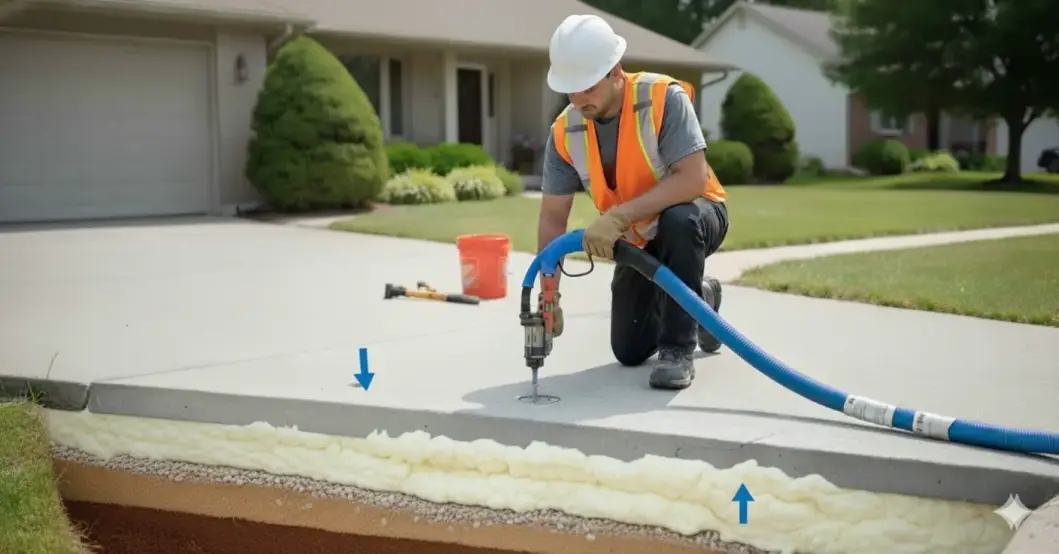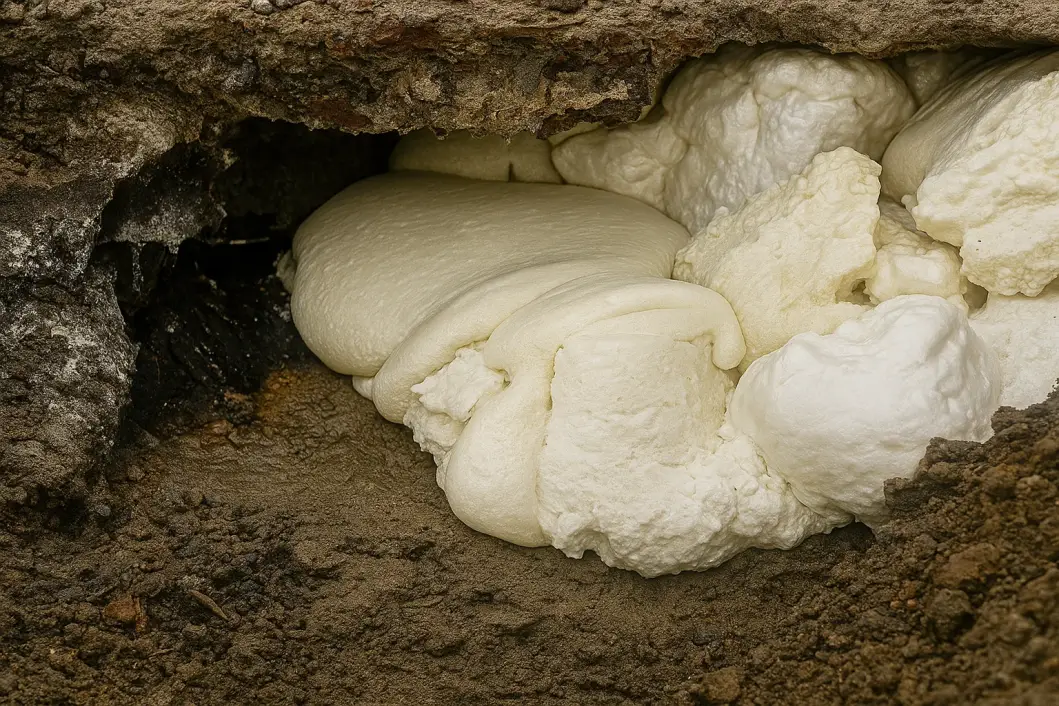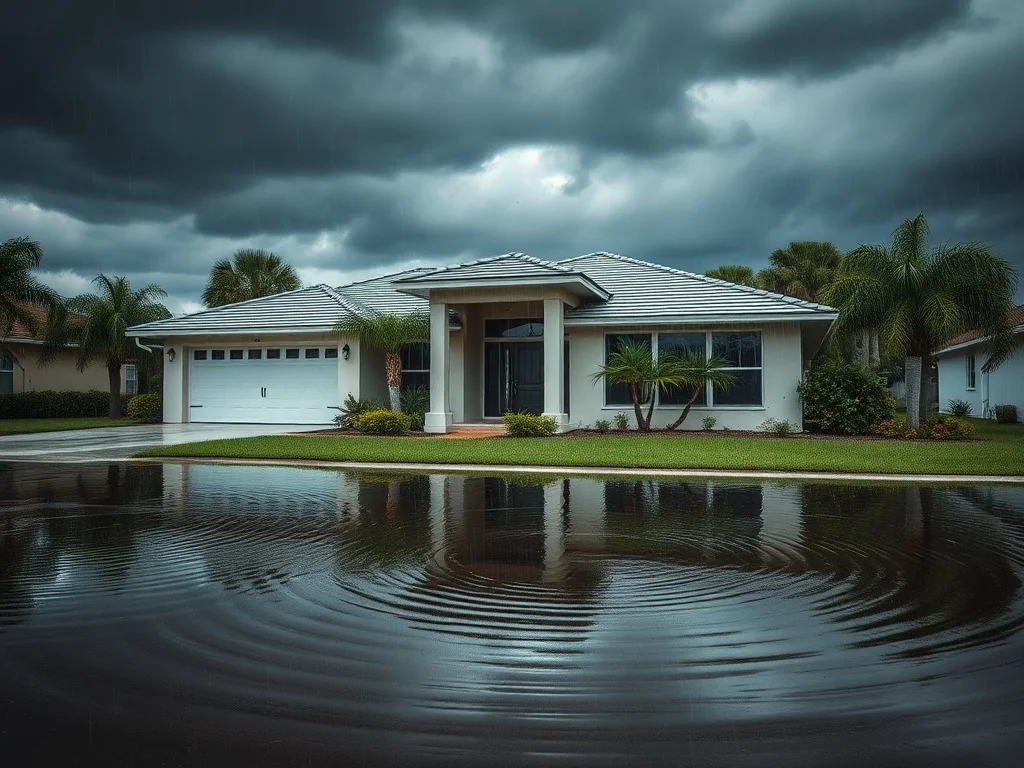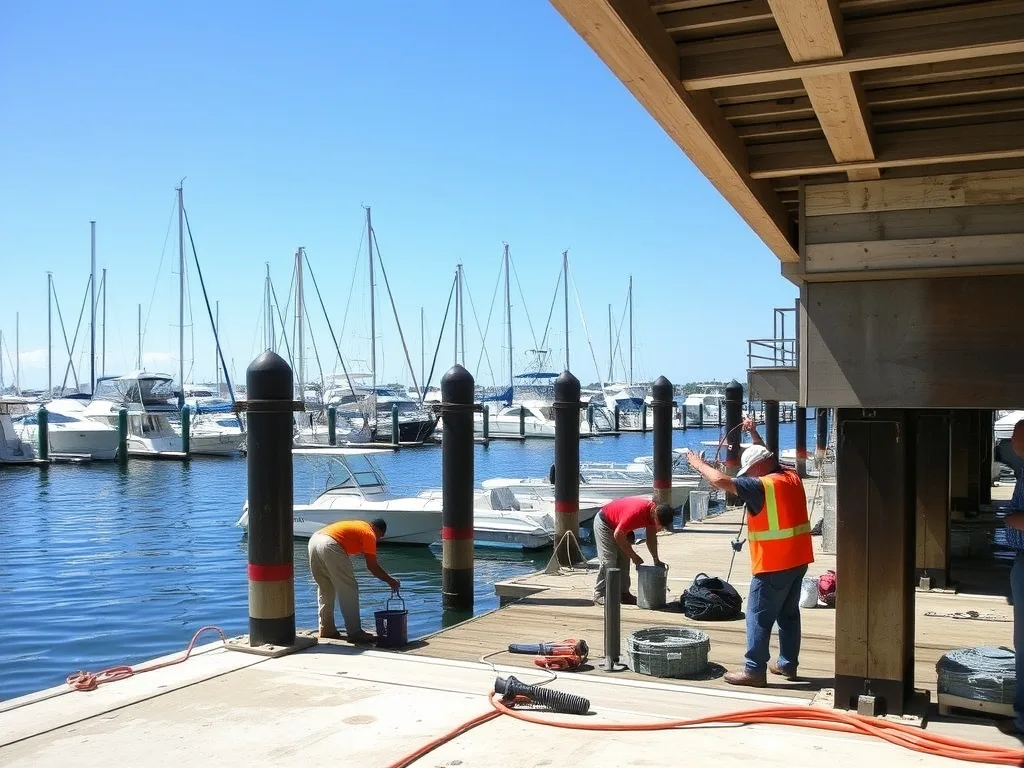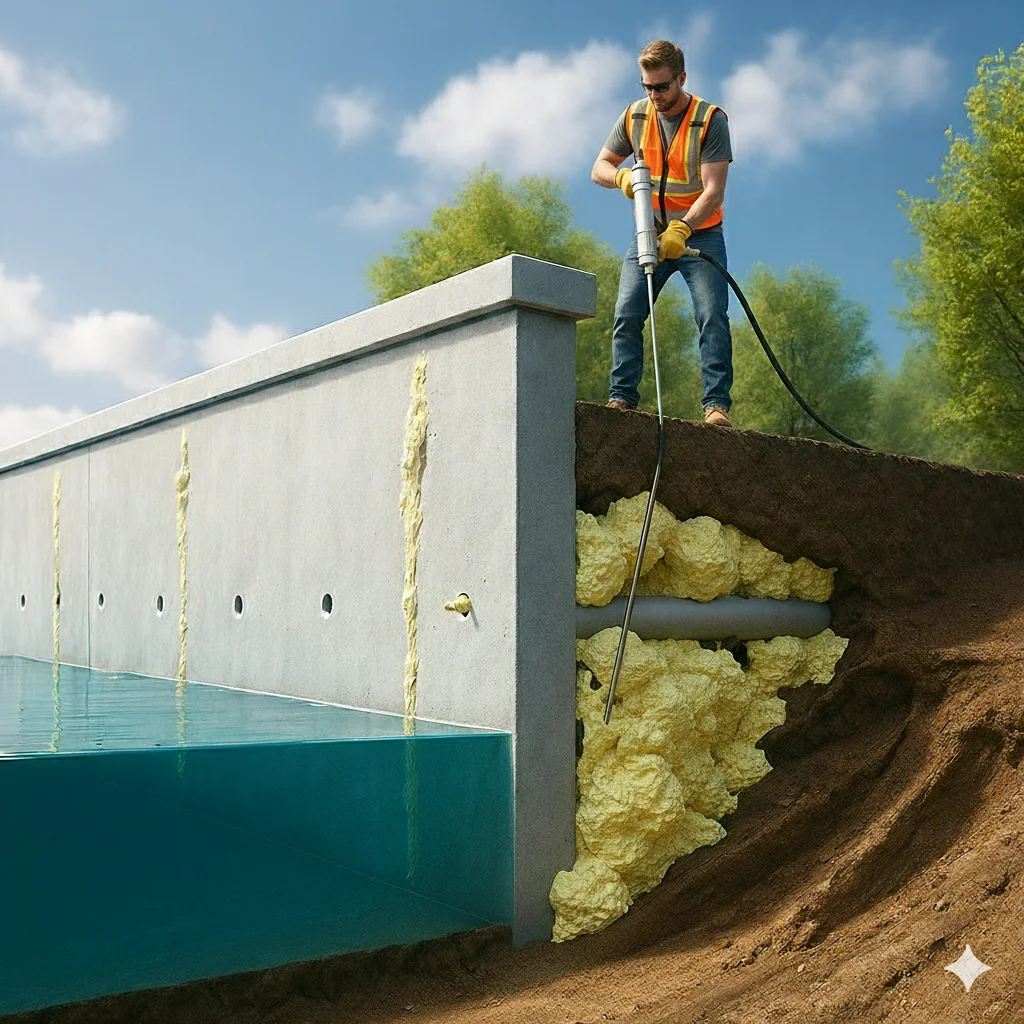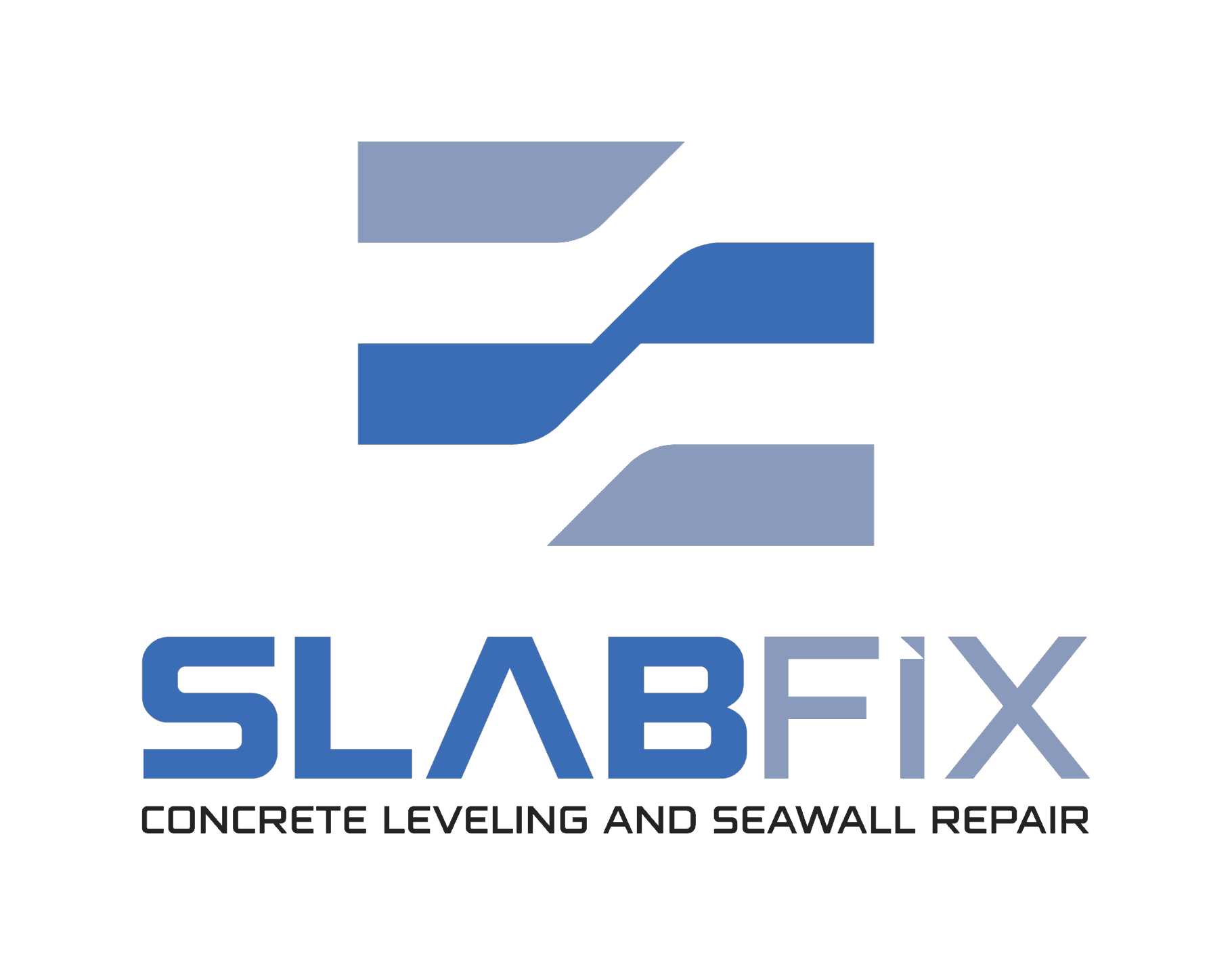Polyurethane Seawall Repair: A Modern Solution for Florida’s Coastal Homes
Introduction: Why Florida Homeowners Need Seawall Protection
Living by the water in Florida is a dream come true. From boating and fishing to simply enjoying the view, waterfront properties offer an unmatched lifestyle. But this privilege comes with a cost: constant exposure to tidal fluctuations, saltwater, storms, and relentless wave action. Over time, these natural forces erode the soils behind seawalls and weaken the structures themselves.
Traditional repair methods often involve costly excavation, concrete replacement, or disruptive construction projects. However, there’s a smarter alternative that is transforming the way seawalls are stabilized and protected: polyurethane seawall repair.
SlabFix, a Florida-based contractor specializing in advanced soil stabilization and concrete restoration, uses Terra-Lok™ 24-120 polyurethane to restore strength, prevent erosion, and extend the life of seawalls — without the mess of traditional repairs.
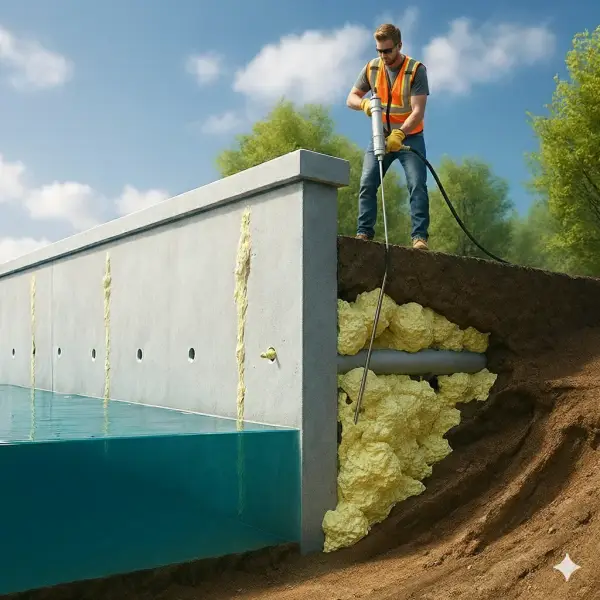
What is Polyurethane Seawall Repair?
Polyurethane seawall repair is a modern geotechnical method that stabilizes soil and seals seawalls by injecting expanding polyurethane resin into weak zones. Unlike traditional methods, which rely on heavy cement grout or full reconstruction, polyurethane provides a non-invasive, cost-effective, and long-lasting solution.
How It Works:
Injection into Weak Soil – A low-viscosity polyurethane resin (like Terra-Lok™ 24-120) is injected behind the seawall through small-diameter rods.
Permeation and Expansion – The resin permeates loose soils and reacts with natural moisture, expanding up to 25 times its liquid volume.
Soil Stabilization – Voids are filled, cracks are sealed, and the soil densifies, creating a stable base that prevents further erosion.
Structural Protection – The seawall is reinforced, reducing hydrostatic pressure and extending its lifespan.
This approach ensures that both the soil foundation and the seawall structure are stabilized together.
Understanding Terra-Lok™ 24-120 Polyurethane
SlabFix uses NCFI’s Terra-Lok™ 24-120, a single-component, low-viscosity polyurethane resin specifically designed for geotechnical applications like seawall and bulkhead stabilization.
Key Features of Terra-Lok™ 24-120:
Single-component system → Simple and precise injection process.
Low-viscosity formula → Easily permeates sandy soils, common in Florida.
Moisture-activated expansion → Expands up to 25x, filling voids and sealing cracks.
Environmentally friendly → Chemically stable after curing.
Durable performance → Provides long-term resistance to tidal erosion and soil washout.
Because of these properties, Terra-Lok™ 24-120 is especially effective for polyurethane seawall repair in Florida, where soils are loose and groundwater is constantly shifting.
The SlabFix Repair Process
Every seawall is unique, but SlabFix follows a proven step-by-step process for polyurethane seawall repair:
1. Site Assessment
SlabFix technicians probe the soil behind the seawall to identify weak zones, voids, and erosion pockets.
2. Injection Rod Placement
Using 6ft injection rods, they access the base of the seawall where soils are most vulnerable.
3. Controlled Polyurethane Injection
Terra-Lok™ 24-120 is injected into targeted zones. As the rods are gradually withdrawn, the resin permeates the soil column from bottom to top.
4. Expansion and Stabilization
The resin reacts with soil moisture, expands, and locks loose soils together, filling voids and sealing joints.
5. Verification and Final Inspection
Technicians confirm stabilization by re-probing soils and inspecting for visible improvement, such as sealed cracks and reduced water infiltration.
This process requires no heavy excavation, no major disruption, and no lengthy downtime. In most cases, homeowners see results the same day.
Case Study: Florida Seawall Restored with Polyurethane
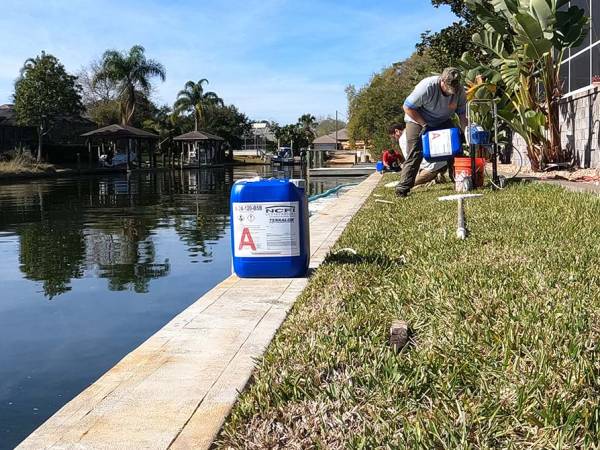
A homeowner in East Central Florida noticed cracking and sinkholes forming near their 360ft seawall. Continuous tidal fluctuations had eroded the soil base, putting the structure at risk.
SlabFix performed a full site assessment, identified weak zones, and injected Terra-Lok™ 24-120 using 6ft rods. The result:
Stabilized the base of the seawall.
Filled voids and sealed leaking joints.
Restored soil strength along the full length of the seawall.
Completed in just one day with thousands in cost savings compared to traditional methods.
Why Polyurethane Seawall Repair Outperforms Traditional Methods
Traditional Methods vs. Polyurethane Repair
Cement Grouting → Heavy, may wash out again, adds weight to already weak soils.
Concrete Replacement → Expensive, invasive, and time-consuming.
Polyurethane Injection → Lightweight, durable, fast-curing, and non-invasive.
Polyurethane is uniquely suited for Florida’s sandy, waterlogged soils. Instead of simply patching the problem, it strengthens the foundation beneath the seawall.
Long-Term Benefits for Florida Homeowners
Stops Soil Erosion → Fills voids and densifies weak zones.
Seals Cracks and Joints → Prevents water intrusion and soil washout.
Extends Seawall Lifespan → Adds decades of protection.
Cost-Efficient → Saves money compared to replacement.
Minimal Disruption → No need for excavation or tearing down the seawall.
Eco-Safe Solution → Chemically stable after curing and safe for residential use.
With polyurethane seawall repair, homeowners gain peace of mind knowing their investment is protected against Florida’s harsh coastal conditions.
Why Choose SlabFix for Seawall Repair
SlabFix is Florida’s trusted expert in foam soil stabilization and polyurethane seawall repair. With years of experience and advanced equipment, the team ensures seawalls are stabilized quickly and effectively.
📞 Contact SlabFix today at 407-379-2585 for a free consultation on how Terra-Lok™ 24-120 can restore and protect your seawall.
Frequently Asked Questions (FAQ)
Q1: How long does polyurethane seawall repair take?
Most projects are completed in a single day, depending on seawall length and soil conditions.
Q2: Is polyurethane safe for the environment?
Yes. Terra-Lok™ 24-120 is chemically stable after curing and designed for geotechnical applications.
Q3: How long will the repair last?
When properly installed, polyurethane seawall repair can extend the life of a seawall by decades.
Q4: Can polyurethane be used on all seawall types?
Yes, it works on concrete, vinyl, and steel seawalls, as well as bulkheads with soil erosion issues.

